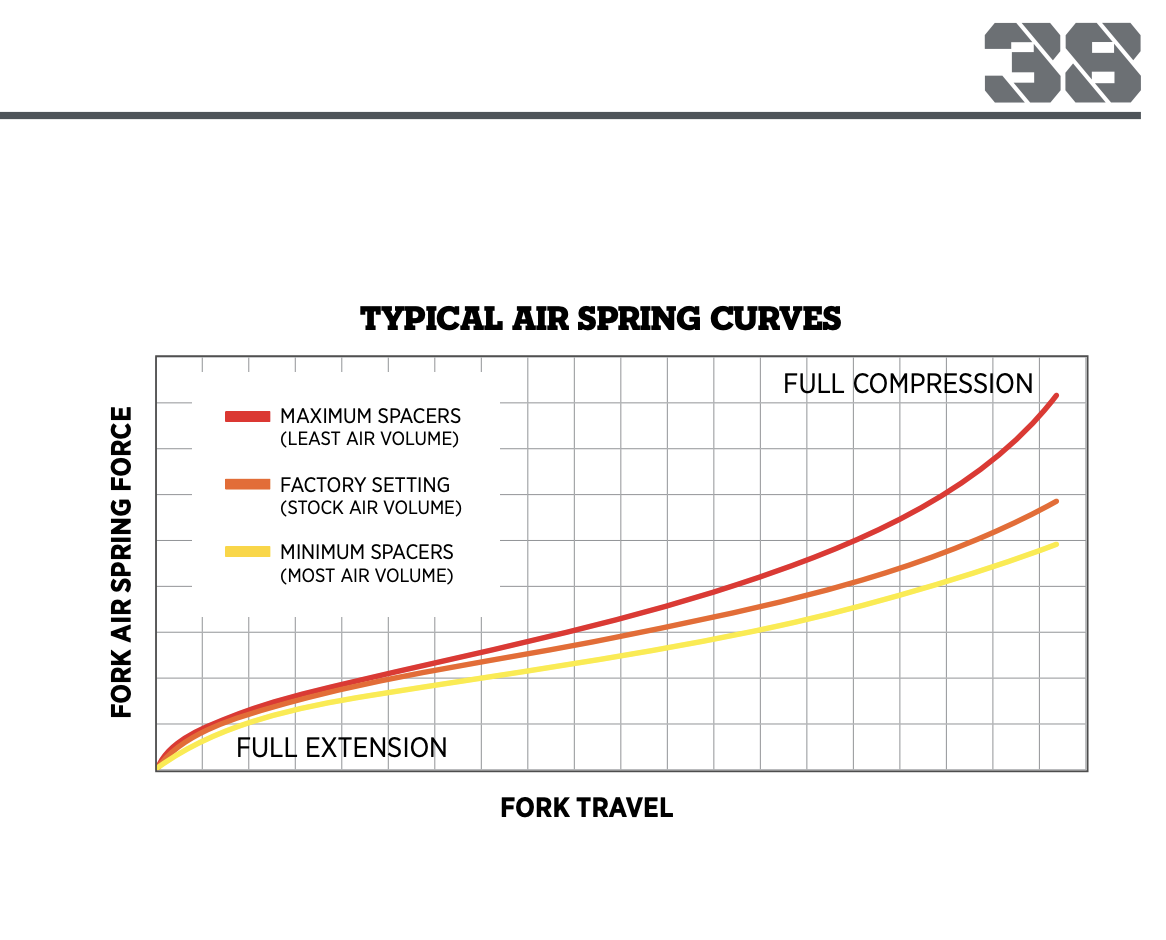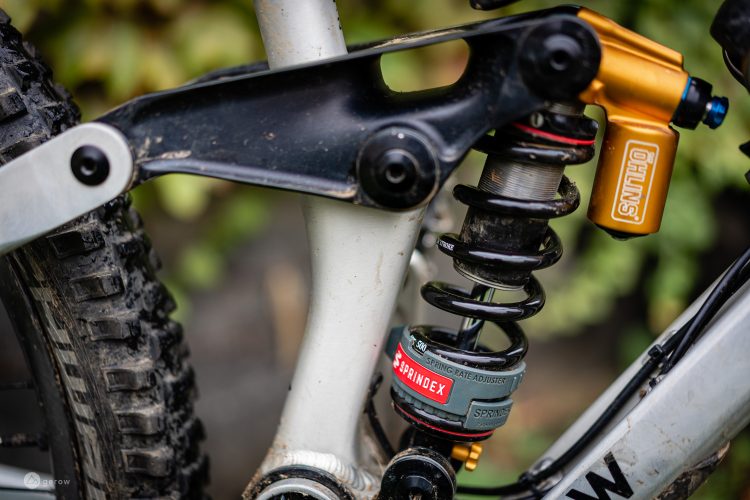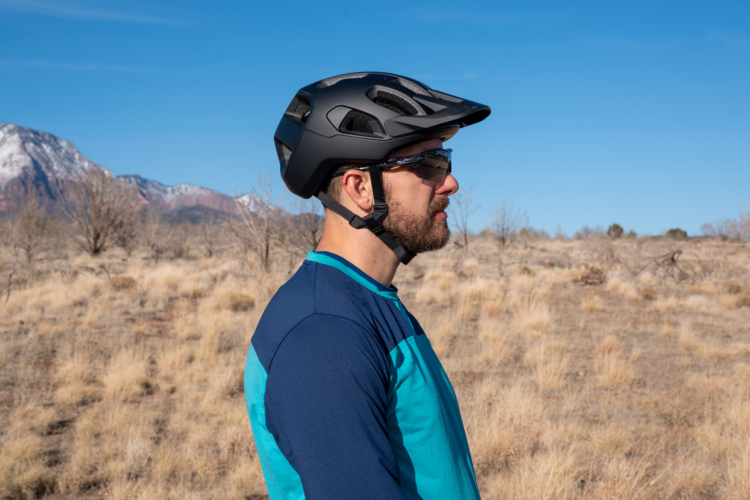
It’s fair to say that most mountain bikers don’t care about a high performing fork — past a certain point anyway. There’s a reason why people gravitate toward the two major suspension brands, RockShox and Fox. They’re trusted, reliable, and as of recent years, perform better than ever.
But do most riders care past the point of setting their sag and rebound, and maybe flipping their low speed compression dial every once in a while? I’d say, no, probably not.
For most riders, the Pikes, and 34s, and Lyriks, and 38s work just fine. After all, suspension companies designed them to work for the largest portion of the bell curve.
Anyone who has tested a coil fork though can easily spout the advantages. Coils typically have better small bump compliance and better mid-support, however steel obviously weighs more than air.
The advantages to air? Weight and adjustability. This makes air forks an easy sell on 95% of mountain bike builds. Swapping springs would require a lot more inventory at shops and setting sag on air suspension is much quicker and more straightforward. Of course, bike brands love to spec the lightest components possible to get that weight down too.

But, what if…one could have the suspension performance of a coil with the weight and tunability of an air spring? That’s where the Vorsprung Secus comes in.
Vorsprung is a suspension tuning shop based in Whistler, BC known for dialing in suspension for gravity athletes in the downhill mecca. They’ve beefed up their business with a product line including the Smashpot coil conversion, the Luftkappe, and the Secus air spring upgrade.
The Secus weighs 130g, much lighter than the typical weight of a coil conversion kit. It installs at the bottom of the air side of a fork and is compatible with several Fox and RockShox models.
Much of what the Secus attempts to do is flatten the curve…the air spring curve that is. Some may have experienced the S-curve in an air fork: a firm initial push, followed by a softer mid-stroke, and a firm again end stroke.
Vorsprung describes the performance benefits of the Secus this way:

It’s a little easier to see the spring curve on Fox’s graph below. If you give your standard air fork a push into the ground you can also feel the initial firm stroke, followed by a softer mid, and a firmer end stroke.

It’s kind of a horrible feeling once you start to notice it on rides. You lose traction, your head angle steepens more dramatically because you’re using more travel up front than in the rear and it’s followed by a feeling of suboptimal traction.
With an expanded negative chamber comes a flatter leverage ratio. The Secus attempts to make the air fork feel like a more linear, more supportive coil fork with better small bump compliance, flattening the potentially regressive air spring curve in the middle.
Vorsprung sent the Secus for me to try out this spring, and I was hesitant to install it myself. As a gear reviewer, I haven’t had a shop install a piece of gear for me in at least a few years. I like to speak to installation issues that may come up for the average consumer, but the Secus called for some assistance.
I was also heading to South America for two weeks shortly after I received the part, and didn’t want to fly with the Secus installed. The amount of bike shop support in Ecuador is also limited compared to Denver if I ran into any issues.
So, I waited until I got back and then called some bike shops. One of them had never heard of the product before and couldn’t offer an estimate because they didn’t know how long it would take.
Finally, I found a bike shop that had installed Secus’ a few times and charged the same amount for install that they charge for a fork service. At $150, I walked away with new seals and oil, and a new curve.
Vorsprung recommends setting your fork pressure to the fork’s recommended PSI + 20%. So the recommended pressure based on my 170ish pound body weight is ~90psi in the fork plus an additional 20%, which is ~110PSI.
I noticed a few differences in the parking lot test. My static sag was deeper — around 30% rather than the 15-20% usually in a recommended fork sag. Also it was easier to press the handlebars down and compress the fork until about a third of the way and then it wouldn’t budge at all.
It wasn’t until I started rounding some berms when I felt the real magic of the Secus. As advertised, my front wheel tracked better and held me more upright and centered on the bike as the air spring pushed back against the dusty, cavitated ground.
It sounds cliche, but the Secus gave me more confidence almost immediately. I had been struggling with the geometry of my long, slack enduro bike and I think part of that came from fork dive. Even though the Fox 38 with a Grip 2 damper is a stellar fork, it still dropped more ride height around corners and down steep trails than I liked. Adding more air pressure, I usually had a hard time using all the travel, even with limited volume spacers. Bumping up the LSC in search of support often came at the expense of comfort in the palm of my hands on faster, medium-sized hits.
I glowed at the bottom of the first descent, remembering the last time my bike felt this good was running a coil fork. On subsequent descents, I felt the same way plowing my bike through chunky, rooty, sections of trail. I had more confidence, the fork felt more active, and held lines better. I backed my low speed compression off a few clicks, because I felt like I didn’t need to rely on it as much for mid-stroke support as before.
On bigger hits, the ramp up maintained the air spring’s characteristics of bottom out resistance near the end stroke, saving about an inch-and-a-half for the biggest landings. Riders can still use their preferred amount of volume spacers in the fork without issue.
The softer initial stroke seemed to help climbing technical terrain too, by keeping me more centered over the top tube and letting the front wheel track better. Overall, the Secus colored me impressed with its performance.
Drawbacks

Is it all good? No, of course not. Installation is either a lot of work, or adds another $100 – $200 depending on your bike shop. Vorsprung sent me the air can to test for free, but if I was a consumer, the total cost of the can and installation would have been around $500, or close to half the cost of the fork. Again, how much do you really want high-high end fork performance?
The added protrusion of the can from the lower adds risk of impact and a potentially expensive repair or replacement, but I haven’t had any problems, nor do I feel like it’s a risk. My pedal still protrudes farther than the Secus, so I’m not sure what kind of situations I’d find myself in where there isn’t enough room for the added reservoir but there is enough room for the width of my stance. As Vorsprung notes, there is some wiggle room for the Secus to take a hit.
I’m more concerned about packing the bag for a trip and having weight rest on the fork during travel, although it looks like it would handle it fine. It’s generous of Vorsprung to offer a year-long crash replacement policy on the Secus too and they will send a brand new one if it’s damaged in the first 12 months.
Lastly, the Secus adds more complexity in servicing since the intervals are different than that of the Fox fork. The interval here is 200 hours, for the Secus. I usually service my suspension once a year (who really keeps track of riding hours) so maybe this works out to every two years on the Secus.
Who is this for?
This seems obvious. The Secus is for bike/gear nerds who want to get the most out of their suspension. Some people buy a bike and don’t change anything on it aside from the grips. Others dissect the product spec and add carbon here and a custom tune there. The Secus fits in with the latter, for gear nerds and racers who want their bike to perform at its highest without the weight of a coil.
Closing thoughts

Vorsprung’s Secus is one of those components that makes me happy to live and ride during a time where performance products continue to get better and more diverse. The difference in feeling on the air spring with the Secus is appreciable. It’s not for everyone, and that’s OK, but for anyone who wants the benefits of both air and coil and more consistent feel in their air fork, I happily recommend it.
Party laps
- Big improvement in fork performance
- Minimal weight addition
- Best of coil and air
Pros and cons of the Vorsprung Secus
Dirt naps
- Not cheap
- Added risk of damaging another component
- Advanced mechanic skills needed for install





















5 Comments
Sep 15, 2022
Sep 15, 2022
Sep 16, 2022
Sep 15, 2022
Also, you should learn how to work on your bike. Get some tools and watch YouTube and save yourself some coin.
Sep 15, 2022